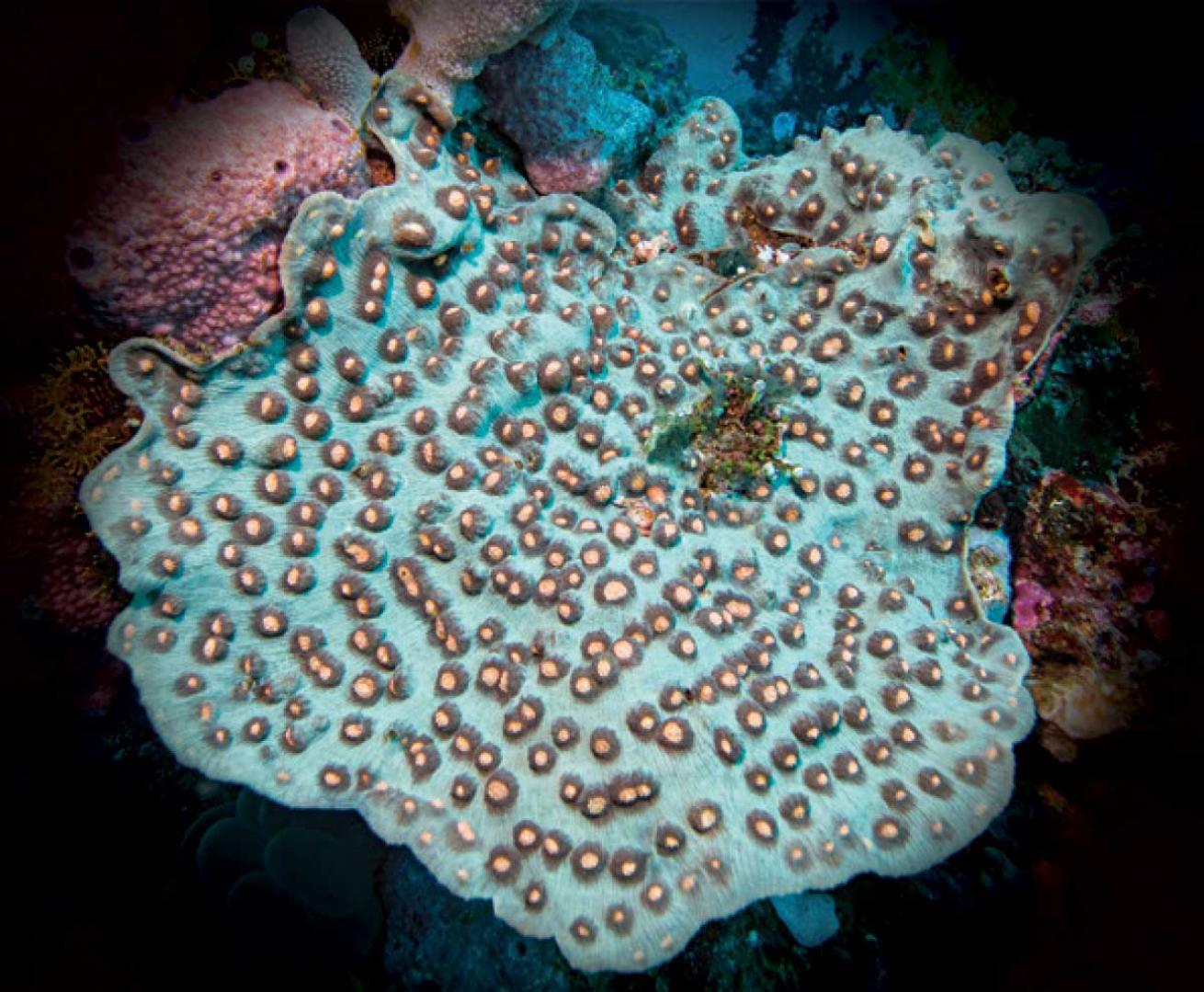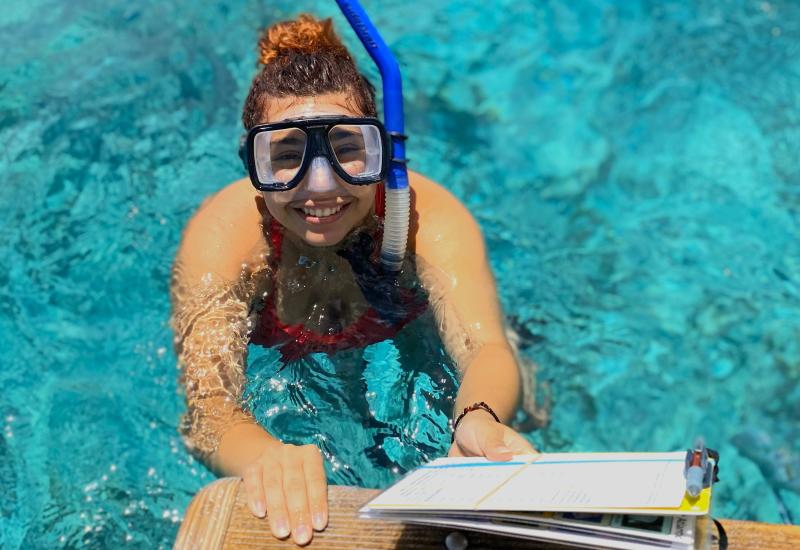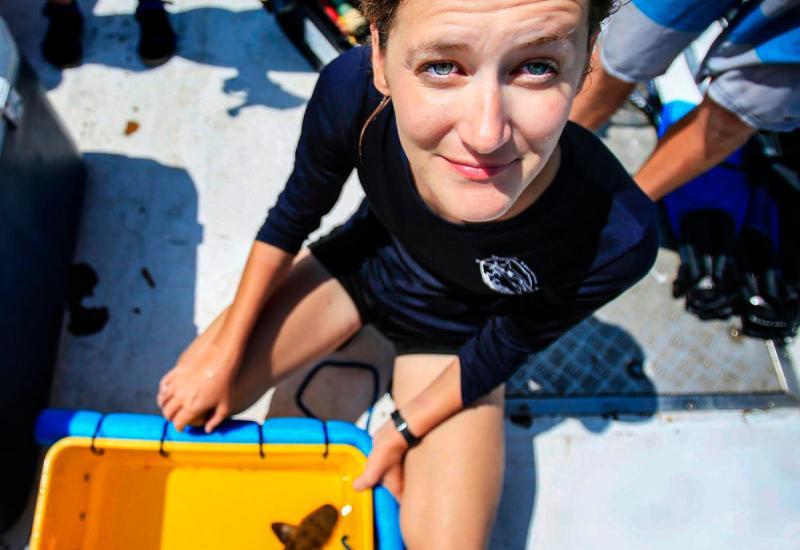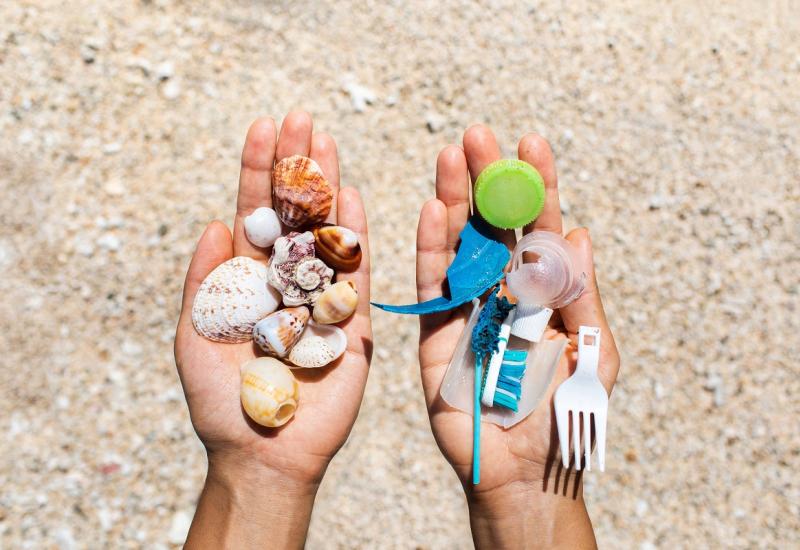How to Identify Mycedium Elephantotus Coral

Nicole HelgasonElephant Nose Coral
Are you looking for a great macro photography subject, and a simple coral to identify? Mycedium is a great place to start. There are only a handful of Mycedium species, and they all share one thing in common.
- Mycedium elephantotus has the largest corallite size, with a very distinct nose-like shape. What’s unique about Mycedium is that its corallites always face toward the exterior of the colony. Mycedium corals all start growing from a center point, spreading outward in a plating shape.
- These colonies are attached to the substrate from the center of the colony, and the edges of the plate grow above the surface of the substrate. When the edges of the colony come into contact with another coral, sponge or rocks, they will curve around, looking for open space to grow.
- Near the edges of the colony, the corallites are much smaller because they are just starting to develop. Near the center, you will find larger, more developed corallites. At night, you can even see the polyps outside of the coral, their sticky tentacles swaying in the currents to catch passing food.
- We love to photograph Mycedium corals because they can have many unique color combinations and the tissues are quite complex once you get down to a macro level. And because corals don’t move around, this is a perfect subject on which to dial in your macro photography setting, light placement and skills.










